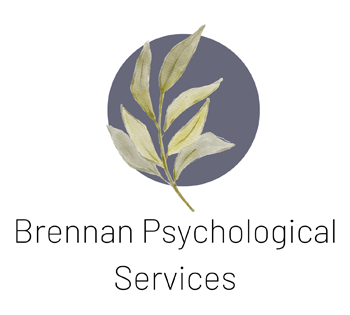Understanding Cognitive Processing Therapy for PTSD
Cognitive Processing Therapy (CPT) is considered one of the “gold standards” in treatments for posttraumatic stress disorder (PTSD) because it has decades of research showing that it is effective for reducing symptoms of PTSD. And, this treatment is not only effective, but it’s also short-term, typically lasting just 12 weeks.
What is Cognitive Processing Therapy?
Cognitive Processing Therapy is a form of cognitive behavioral therapy (CBT) for PTSD. According to cognitive-behavioral principles, thoughts play an important role in how a person feels and acts. So, a large part of therapy focuses on shifting one’s perspective in a way that may help reduce painful emotions and increase positive behaviors.
For people with symptoms of PTSD, often the trauma has changed how they think about themselves, other people, and the world. For example, many trauma survivors blame themselves for the trauma and view themselves in a negative light afterward. Or, they may lose trust in other people or view the world as a dangerous place. These beliefs may lead to feelings of fear, shame, and/or increased isolation from others. The goal of CPT is to help people struggling with PTSD to notice these beliefs and practice shifting their perspective in a way that makes it easier to heal and move forward.
CPT involves therapeutic processes:
Cognitive Restructuring: CPT focuses on identifying and challenging “stuck points” or unhelpful beliefs that have been shaped by the trauma. These stuck points might include thoughts such as, “I caused the trauma to happen” or “no one can be trusted.” Challenging stuck points includes noticing problematic patterns of thinking, examining the facts of the situation, and coming to a more realistic and helpful interpretation.
Emotional Processing: A large component of CPT is exploring beliefs about the impact that the trauma has had on your life. This can bring up many challenging emotions as you examine how your life may have changed since the trauma. Talking through the details of the trauma can often illicit a range of difficult emotions, including sadness, anger, guilt, and shame. Your therapist will help you process these emotions in a supportive and validating environment.
Exposure (Optional): To a certain extent, this treatment will involve exposure to the memories and emotions surrounding the trauma. This is simply due to the fact that you will talk about the trauma as you challenge your “stuck points.” In addition, there is an option to do a more formal exposure to the trauma memory within the 12 sessions of CPT. This exposure entails writing a detailed account of what you experienced. It’s important to note that this is an optional assignment, and not everyone chooses to write the trauma account. Those who do choose this option find that exposure to the trauma memory can help reduce avoidance and increase a sense of control over the trauma memory.
What Can I Expect from CPT?
Format of Treatment:
Cognitive Processing Therapy typically consists of 12 60-minute therapy sessions. In the first session, you’ll be provided with an overview of the symptoms of PTSD and details about how CPT works to target symptoms of PTSD. You will also be provided with an overview of treatment, and your therapist will assign the first homework assignment. The session will begin with a review of your homework. Any “stuck points” that have come up will be discussed in therapy. Through a series of questions, your therapist will help you challenge these stuck points and gain a new perspective. The first several sessions will focus primarily on trying to reduce self-blame and guilt related to the trauma. Afterward, sessions will focus on specific trauma-related “themes.” These are areas of your life that may have been impacted by a traumatic experience and include beliefs about safety, trust, power/control, esteem, and intimacy.
An important part of CPT involves “homework” between sessions. You can expect to complete worksheets every week to help you practice noticing and challenging stuck points. There are several benefits of completing CPT homework assignments, including:
Getting the most out of therapy so that you can see improvements sooner
Applying therapy skills to your every-day life
Acquiring tools that you can come back to after therapy ends.
The homework is not typically time consuming, and your therapist can help you problem-solve if you’re not sure how to fit therapy homework into your day.
Will CPT Help Me?
CPT is considered a “gold standard” in therapies for PTSD because it has strong research to suggest that it helps reduce symptoms of PTSD. This therapy can be helpful for those who have experienced different types of traumatic experiences, including:
Physical or sexual assault
Combat
Serious accident
Childhood abuse
Birth trauma
Research has shown that it is more effective than standard supportive therapy. Not only do people who engage in CPT experience a reduction in symptoms, but they also report improved quality of life. That said, every person is different, and no one type of treatment will work for everyone. If you’re interested in learning more about whether CPT can help you, it’s a good idea to first check-in with a CPT trained therapist.
How Can I Get Started?
The first step is to connect with a psychologist or other therapist who is trained in CPT. You will first have a short phone consultation to briefly go over your main concerns bringing you in to therapy and to go over any questions that you have before starting therapy. You can schedule an initial phone consultation here.
After the phone consultation, the first session or two will focus on gathering information on your current symptoms to see whether treatment for PTSD may be helpful, and what the different treatment options are. Although CPT is a great choice for treating PTSD, it is not the only evidence-based therapy out there. If you and your therapist decide that CPT is a good fit for you, you can then go over when would be the best time to start. For example, if you’re going to be traveling or unavailable for weekly therapy, it may make sense to wait until your able to meet regularly. CPT can be done either virtually or in-person, which may make it easier to make time for therapy appointments.
Take Home Message:
CPT is an evidence-based therapy for PTSD, that can typically be done in 12 weeks with weekly therapy sessions. The focus of the therapy is challenging unhelpful beliefs about yourself, other people, or the world that have been shaped by the trauma and that may keeping you stuck in symptoms of PTSD. You can request a phone consultation here if you’re interested in learning more about whether CPT may be a good choice for you.

